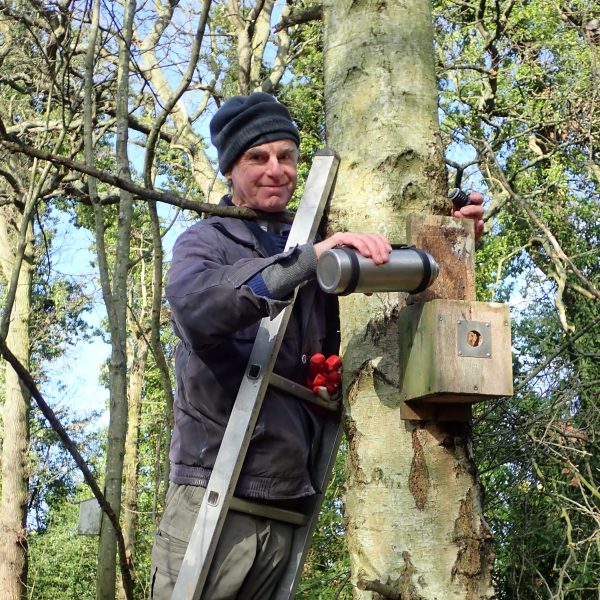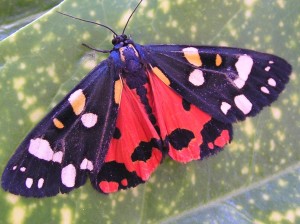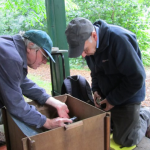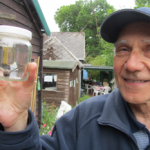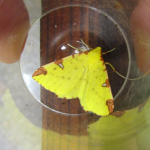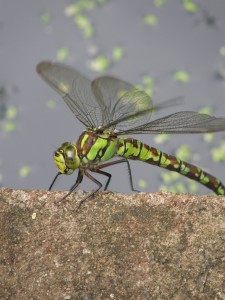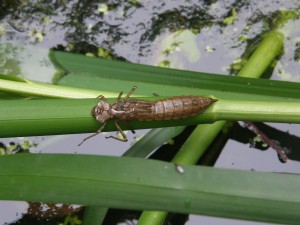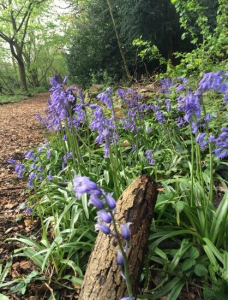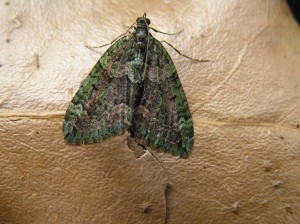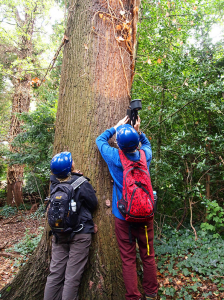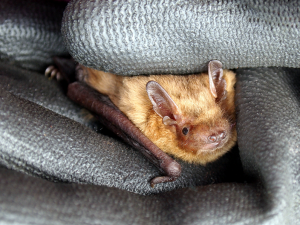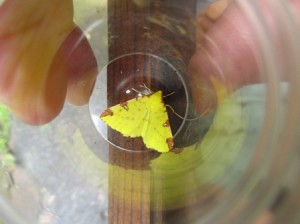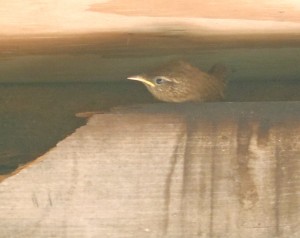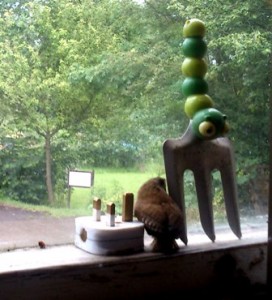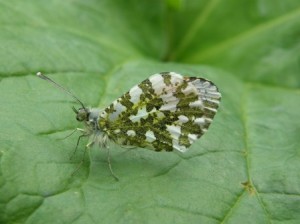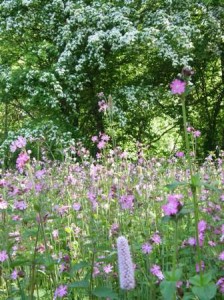As custodians of this precious green space, close to Birmingham city centre and surrounded by urban sprawl, we take our role in looking after the wildlife who visit here seriously. In recognition of the variety of species who visit, the wildlife area is designated a SLINC (a site of Local Importance for Nature Conservation). Pictured here, our volunteer wildlife surveyors, Andrew Curran (Left) and Brian Perry (Right), are running annual checks on our bird boxes— the nesting boxes are cleaned, at a time when they are not in use, to reduce the risk of parasites infesting young birds in the nesting season.
Brian explains: “We have two types of nestboxes, ones that can be removed from the tree and others that can’t. So the first photo shows us removing a box from the tree. The second shows Andrew with a fixed nestbox. It’s obviously easier to clean the removable boxes – if not, we have to clean whilst perched on a ladder. As the photo shows, Andrew has found a way to sterilise the box – he’s pouring boiling water into it from a thermos!”
Thanks to the generosity of a Friend, who has supplied us with a regular delivery of bird seed for a number of years, the birds at Martineau Gardens are fed throughout the year. They enjoy a wild bird seed containing black sunflower, red millet, white millet, canary seed, naked oats, rape seed and wheat.

